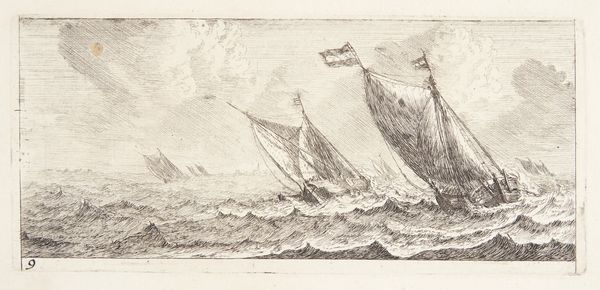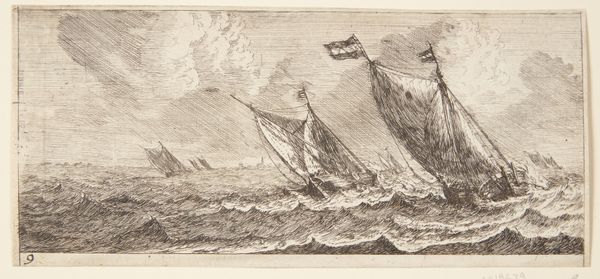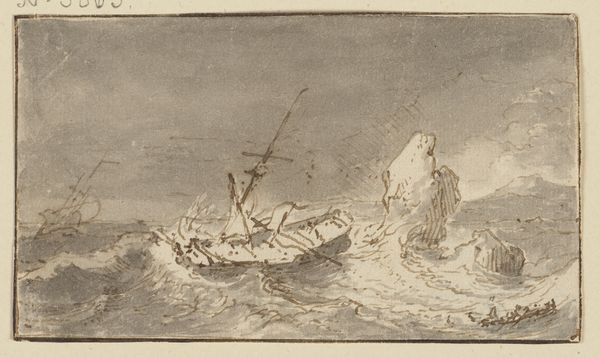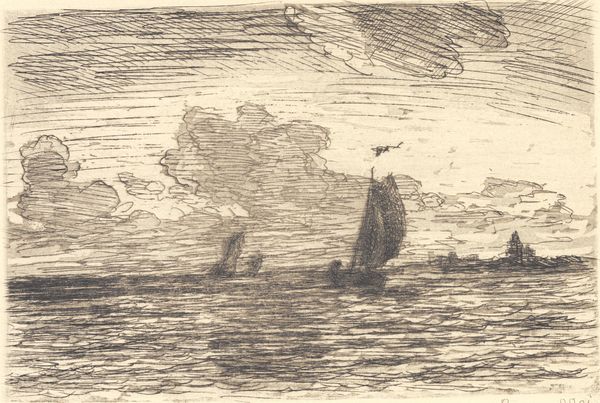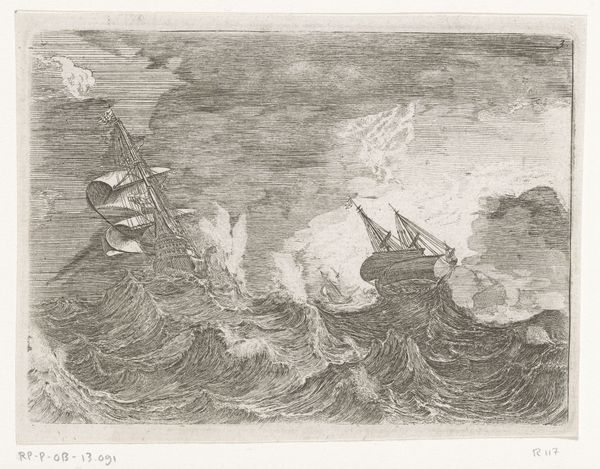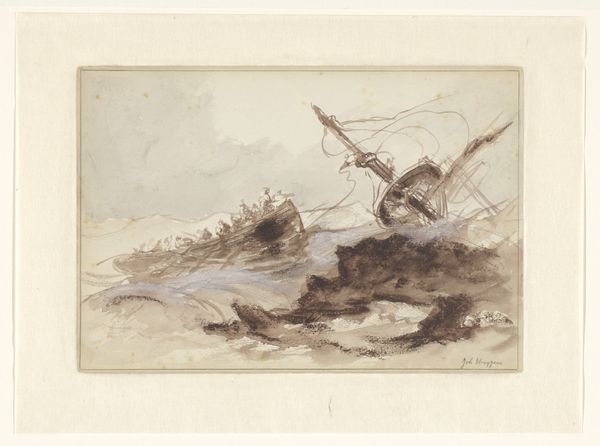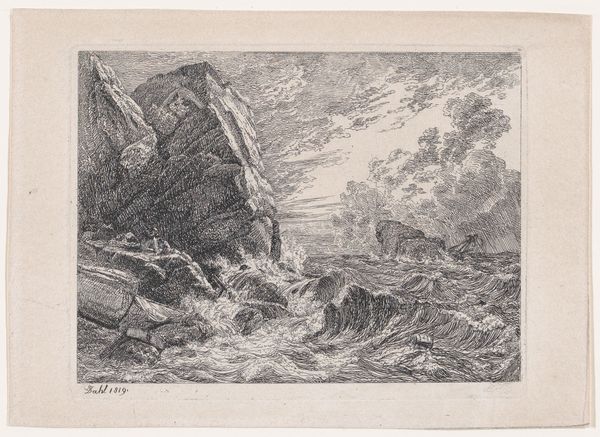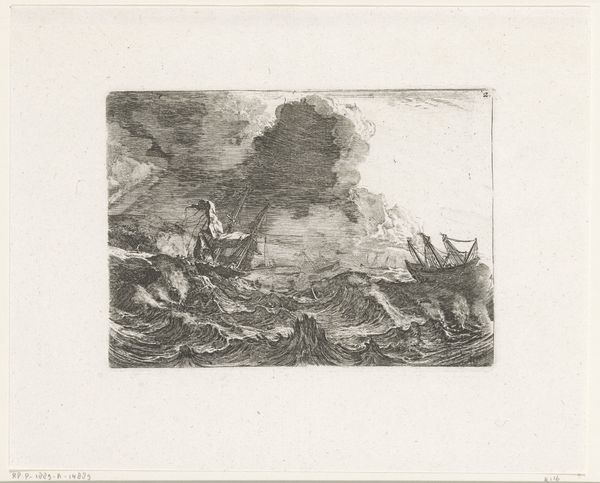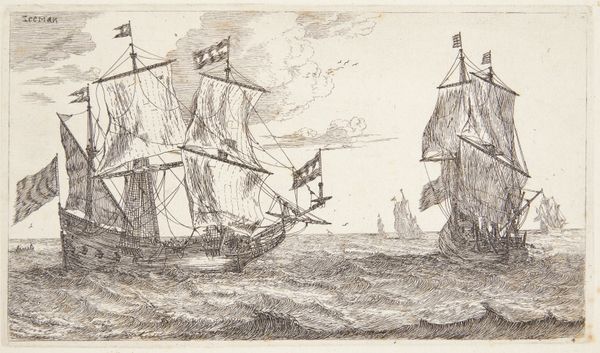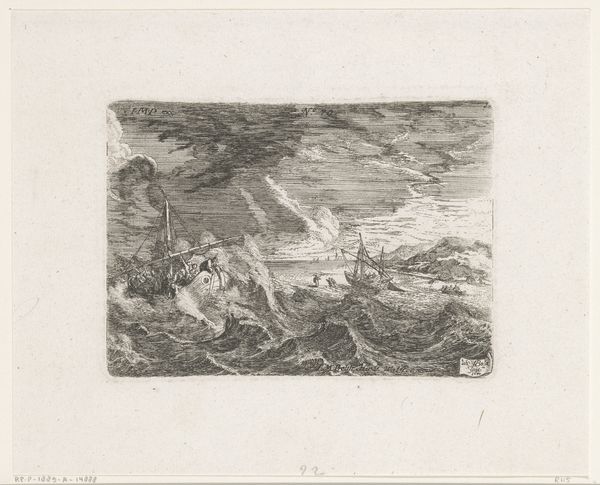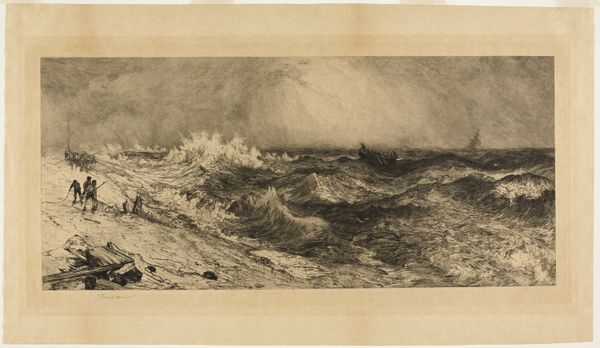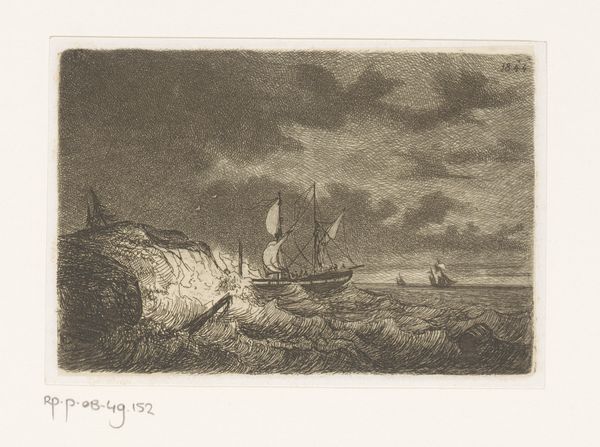
print, etching
#
narrative-art
#
baroque
#
dutch-golden-age
# print
#
etching
#
landscape
#
pencil drawing
Dimensions: 80 mm (height) x 180 mm (width) (plademaal)
Curator: Reinier Nooms created this etching, "Sejlskibe i storm," sometime between 1651 and 1652. The title translates to "Sailing Ships in Storm," which immediately gives you a sense of the subject matter. Editor: Yes, turbulent! It feels precarious—I’m immediately drawn to the ships tossed about by the waves; there's such an evocative sense of struggle here. Curator: Etching was a key printmaking technique in the 17th century, a period marked by burgeoning maritime trade for the Dutch. The materials were readily available: copper plates, etching needles, and acid to bite the design. It’s all about transferring an image through chemical action on a treated surface, which seems fitting for a subject defined by such powerful forces of nature. Editor: Exactly. Think of the historical context. The Dutch Golden Age was built on naval power, yet this work complicates that narrative. We’re not shown triumph, but vulnerability, hinting at the risks involved in empire building and the human cost hidden behind mercantilism. This image captures that precarity. Curator: The artist, Reinier Nooms, also known as Zeeman, which translates to "Seaman," actually spent a considerable time at sea. It lends authenticity to the image—this isn’t just a romantic notion of a storm but an observation of the very real and material challenges of maritime life. Look closely at the detail in the rigging, the way the waves are rendered; he understands these ships, these storms. Editor: It certainly does bring forth crucial questions of labor. Who are the people on those ships? The working class, essentially fueling this economic boom through dangerous work. What were the lives of sailors? And it pushes us to remember the role slavery played in powering trade ships at the time. This tumultuous ocean becomes a symbol of historical injustice. Curator: Indeed. There is that tension inherent in this style of work: documenting the expansion of the Dutch Empire and subtly calling to question the mechanisms by which this all occurred. Nooms is using available and very accessible etching tools, mass producing these images that get consumed by the very classes who benefit from the sailors labor. It offers food for thought! Editor: It does, making this piece so much more than just a depiction of sailing ships—it’s a mirror reflecting the complexities of power, labor, and the inherent dangers woven into the fabric of Dutch maritime history. A narrative of resilience and peril.
Comments
No comments
Be the first to comment and join the conversation on the ultimate creative platform.

